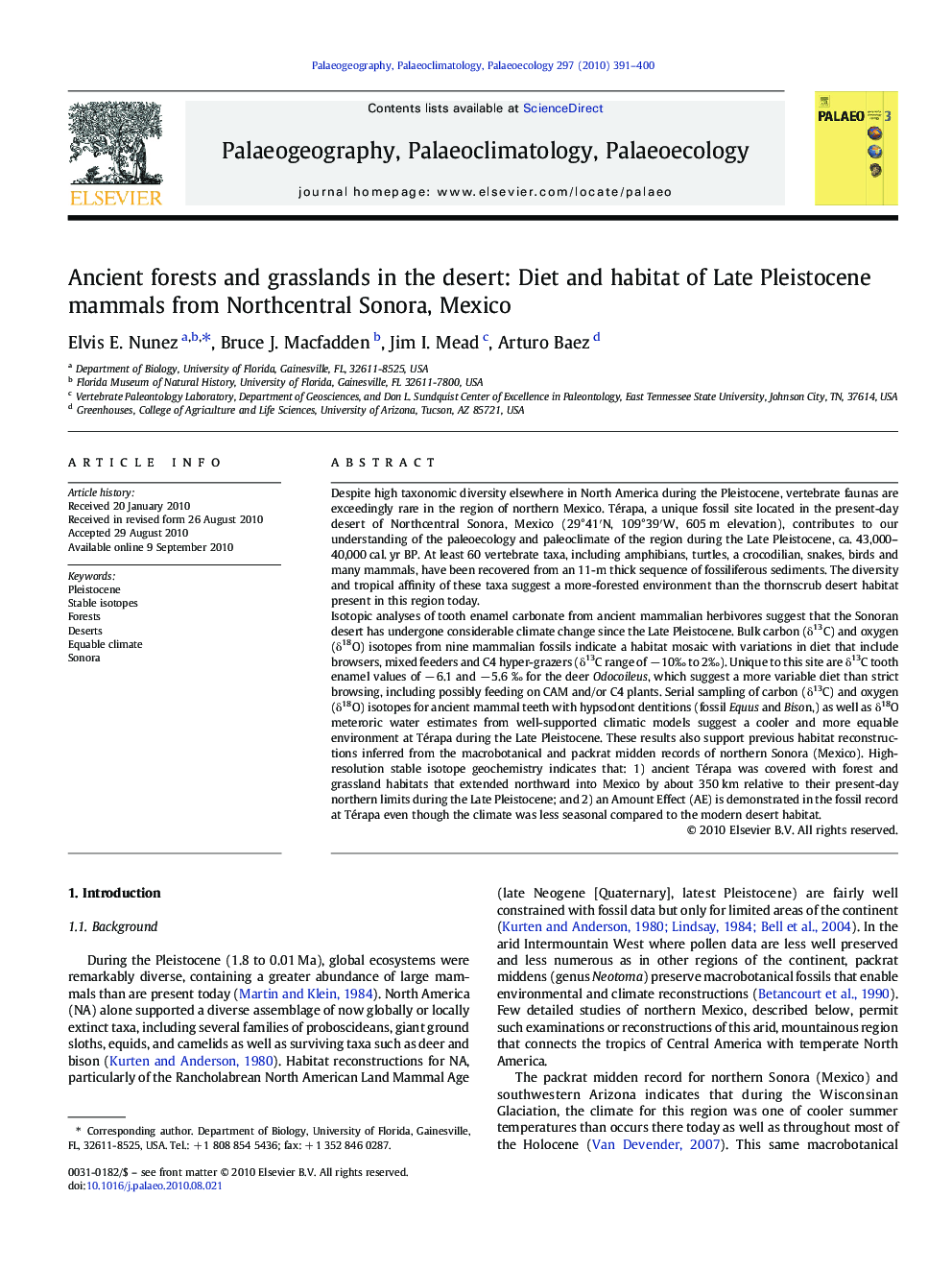| کد مقاله | کد نشریه | سال انتشار | مقاله انگلیسی | نسخه تمام متن |
|---|---|---|---|---|
| 4467484 | 1314079 | 2010 | 10 صفحه PDF | دانلود رایگان |

Despite high taxonomic diversity elsewhere in North America during the Pleistocene, vertebrate faunas are exceedingly rare in the region of northern Mexico. Térapa, a unique fossil site located in the present-day desert of Northcentral Sonora, Mexico (29°41′N, 109°39′W, 605 m elevation), contributes to our understanding of the paleoecology and paleoclimate of the region during the Late Pleistocene, ca. 43,000–40,000 cal. yr BP. At least 60 vertebrate taxa, including amphibians, turtles, a crocodilian, snakes, birds and many mammals, have been recovered from an 11-m thick sequence of fossiliferous sediments. The diversity and tropical affinity of these taxa suggest a more-forested environment than the thornscrub desert habitat present in this region today.Isotopic analyses of tooth enamel carbonate from ancient mammalian herbivores suggest that the Sonoran desert has undergone considerable climate change since the Late Pleistocene. Bulk carbon (δ13C) and oxygen (δ18O) isotopes from nine mammalian fossils indicate a habitat mosaic with variations in diet that include browsers, mixed feeders and C4 hyper-grazers (δ13C range of − 10‰ to 2‰). Unique to this site are δ13C tooth enamel values of − 6.1 and − 5.6 ‰ for the deer Odocoileus, which suggest a more variable diet than strict browsing, including possibly feeding on CAM and/or C4 plants. Serial sampling of carbon (δ13C) and oxygen (δ18O) isotopes for ancient mammal teeth with hypsodont dentitions (fossil Equus and Bison,) as well as δ18O meteroric water estimates from well-supported climatic models suggest a cooler and more equable environment at Térapa during the Late Pleistocene. These results also support previous habitat reconstructions inferred from the macrobotanical and packrat midden records of northern Sonora (Mexico). High-resolution stable isotope geochemistry indicates that: 1) ancient Térapa was covered with forest and grassland habitats that extended northward into Mexico by about 350 km relative to their present-day northern limits during the Late Pleistocene; and 2) an Amount Effect (AE) is demonstrated in the fossil record at Térapa even though the climate was less seasonal compared to the modern desert habitat.
Journal: Palaeogeography, Palaeoclimatology, Palaeoecology - Volume 297, Issue 2, 10 November 2010, Pages 391–400